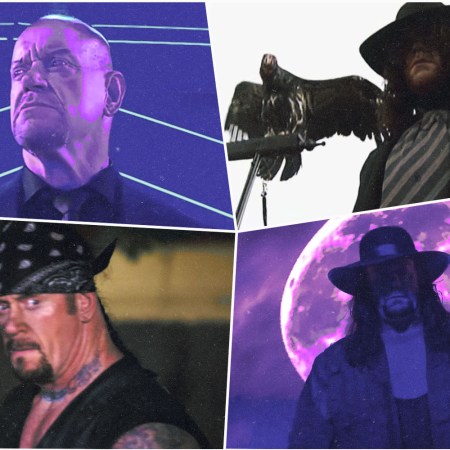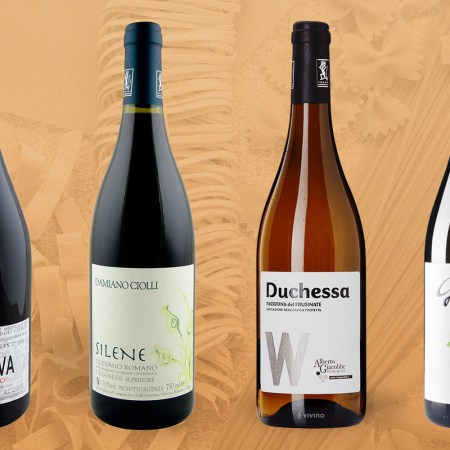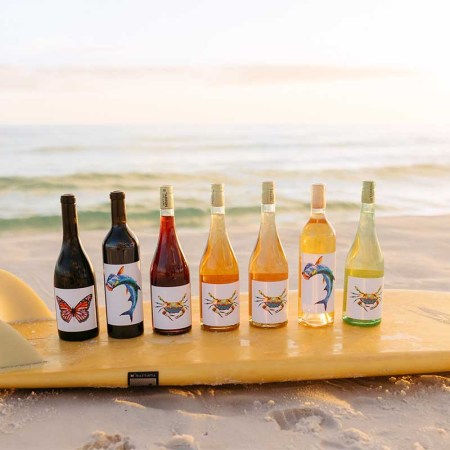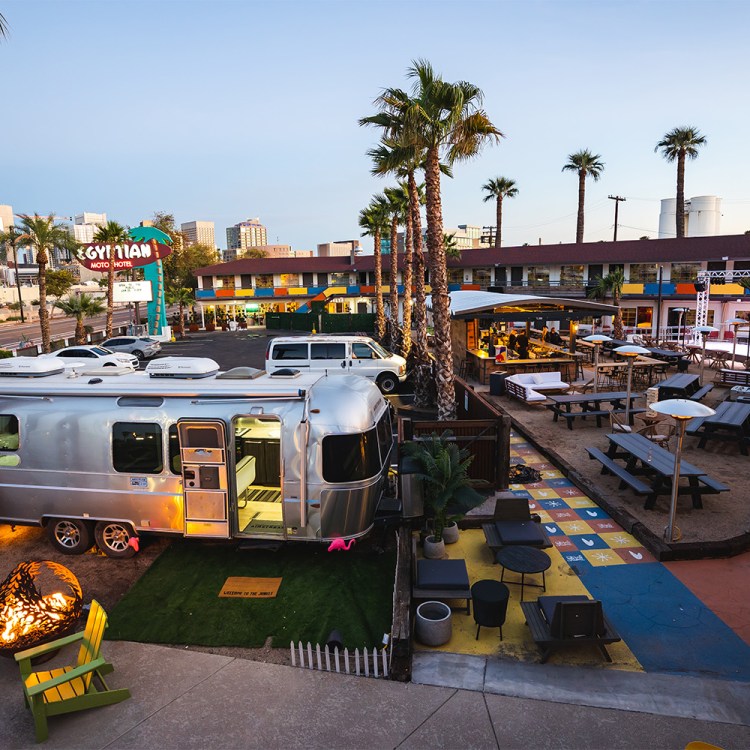At some point, most wine drinkers decide that they “know what they like” and give up on broadening their horizons.
That’s where Chris Hoel comes in.
Hoel is the former sommelier of French Laundry and founder of Harper’s Club, an LA wine concierge that helps customers to build their collections through vendors and collections that might not be available to them otherwise. And it’s not just for people trying to hunt down a 1990 Chateauneuf-du-Pap: regardless of price point, Harper’s Club has you covered.
Earlier this week, Chris stopped by to lend his expertise on the wide world of wine: how to change your habits in the summertime, where you can actually find value in California, the biggest misconception in the wine world today, and plenty more.
InsideHook: Summertime is upon us. How does that affect your wine choices?
Chris Hoel: The easy answer is to go to rosé and white wine. But not everyone loves white wine to the degree I do. A lot of my guys have a heavy red collection, and only a few balance it out or have a heavy white collection … The ‘17 white Burgundies that are coming out — those are a great thing to populate cellars with at all ends of the spectrum. You can get a great little Chablis or Sancerre for under $50; if you want Gand Cru in large format we’re dealing with prices that have a comma in them. And kind of everything in between.
What’s one of the biggest misconceptions you have come across lately when it comes to wine?
I think one of the biggest fads is this whole natural wine movement. Everyone is gravitating toward natural wines as though they have some undiscovered health benefit that has been unknown to us for the last century … I think you end up with an overly hipster wine and I don’t find them to consistently be better. And unfortunately right now if you said, ‘OK I have two wines, one’s natural and one is not — the price is the same — which one would you like?’, people are going to pick the natural wine. And I don’t really understand that. I would probably pick the opposite … That being said, if I were to write a wine list in the LA, I would absolutely have a natural wine section. Don’t be so foolish that you’re going to push away a whole segment of people because it will allow you to educate them.
What’s the LA wine scene like currently?
I think LA has pent-up energy for a great wine scene. And over the last five years I’ve seen lists get bigger and new hotels like the Waldorf pop in with fantastic lists. I’m hoping to catch this wave. People are looking to get more into it. LA’s always had an amazingly wide diversity in its cuisine, I think in some regards more so than New York. But New York has deeper tentacles and more at a higher level [when it comes to wine]. More really cool wine bars with interesting, fun lists … That’s why I moved down here, because I think there’s a tremendous amount of opportunity.

What are you into right now?
I love bubbles. I probably drink four out of five bottles white, and out of those four, three are bubbles. Lots of Champagne, I also drink dry styles of Cava; Prosecco has made huge leaps and bounds in the last 10 years in terms of drying up those wines and making really good versions. They’ve also isolated certain vineyards that produce significantly better versions of Prosecco than others. Cartizze is now considered the “Grand Cru” vineyard, it’s a hilltop vineyard in Conegliano in the Veneto region of Italy.
Pretend you’re having a party or a dinner this summer, and you’re responsible for the wine. What are you bringing in terms of whites and reds?
You need stuff that’s right down the middle of the road. I think that’s Chablis. Chablis is skinny enough to appeal to Sauvignon Blanc and Sancerre drinkers; it’s still Chardonnay, so it’s got broaders shoulders to allow it to appeal to those drinkers on the whole, and it offers amazing nuance that you don’t get from many areas. I’m also a big fan of Albarino from Rias Baixas, I think those wines can be absolutely delicious. They’re not trying to be overly complicated and intellectual wines. They’re just good wines and offer a great value to quality ratio.
I like Riojas for down-the-middle reds because they’re interesting and they’re almost always aged longer than other wines in barrel, so they’re a little bit more evolved and some of their rough edges have been polished off, yet they are very affordable. Chianti seems weird to recommend but the overall level of quality of Chianti has risen to such that you can get absolutely amazing Chiantis for under $25. For summertime you want to keep it a little lighten, and Chianit is not as big and robust as Brunello. Pinot Noir always works well too, whether it’s domestic or international. Pinot Noir is typically my go-to crowd pleaser. Because in the summertime, if you drink Cabernet, a Pinot Noir has enough tannins that you’re not going to ask for a beer.
Any recommendations for choosing a rosé?
I still drink my weight in rosé in summer, but I’ll branch out and try some new guys because there are so many rosés on the market. It’s really perplexing — how are people going to chose a rosé? I like drier rosé, so I look for two things when I look for a bottle. Number one, the alcohol content. Wines that typically are going to be dry are 12.5% [alcohol content] and higher so I look for a rosé that’s 13-13.5%. And second I like lightly colored rosé. It’s harder to make a mass-produced rosé that’s light in color. Darker color rosés to me typically are more mass-produced and so there’s not as much nuance and floral notes.
Any advice when it comes to serving them?
Often we serve white wine too cold and reds too warm. My rules of thumb typically for people is for white wine [and rosé] — pull it out of the fridge for 20 minutes, then enjoy it. And for a red that’s just on the rack, put it in the fridge for 20 minutes to bring the temperature down.

What are some of your favorite restaurants in LA to go for wine?
I haven’t sought out a lot of the wine experiences in LA, but I have my old standards like Spago. I know every time I go there there’s going to be something fun and cool and interesting. And it’s such a deep list I can get lost in it. But I also do like going to Night + Market, because they do have a cool wine list and it’s always changing which is great. Tabula Rasa for the same thing, it’s constantly changing, and it’s also in my neighborhood, which helps.
What about somms you admire in the city?
Phil Dunn at Spago has always been a great resource and is one of the few old guard guys that have been around for a while. I think Sarah Clarke at Osteria Mozza constantly gets overlooked as one of the best sommeliers of the city. She definitely knows her stuff, I don’t even look at the list when I’m at Mozza for that reason alone. She’ll bring me something that I would have not picked and it’s better than what I would have.
Who are some newer California winemakers that people should know about?
One brand that I’m excited about right now because they’re not doing Napa Cab in California, is Helen Keplinger and her husband DJ Warner. They produce wines that come out of the Sierras that are more Rhone-based, so one might be Grenache-heavy, one might be Syrah-heavy and for the quality of the wines that she puts out for the dollar, people are overlooking them because they don’t say Napa Cab on them. Andy Erickson is probably one of the most talented winemakers in all of Napa, he currently makes the wine for Dalla Valle, he’s made it for Screaming Eagle in the past, he’s made it for Staglin in the past. He has a brand with his wife called Favia, again super under the radar and super low production. And his forte I think is doing Cabernet Franc-dominated blends. They’re a touch higher [price] than Keplinger, but they’re nowhere the strastospheric level of the cold Napas coming out of the region. They are jaw-droppingly fantastic. In the Central Coast, there are a couple of up-and-coming producers. One of them is Liquid Farm, they do Chardonnay and Pinot Noir and a great Rosé. … There’s another brand out of Santa Cruz called Vocal made by Ted Glennon and he makes a Pinot Noir, Gruner Veltliner, a Grenache in magnum only — they are really cool, down to earth, totally affordable wines.
This article was featured in the InsideHook LA newsletter. Sign up now for more from the Southland.


















